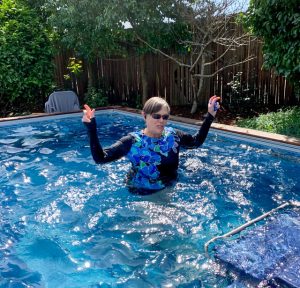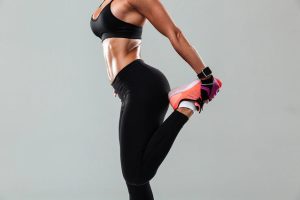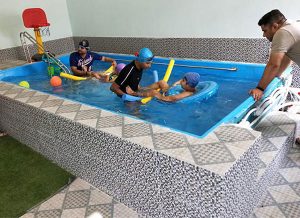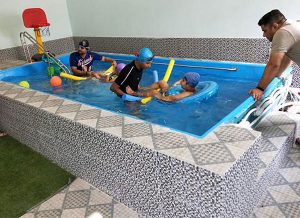Rehabilitation Training Equipment

Rehabilitation Training Equipment

Rehabilitation training equipment is a great way to help people with chronic illness and disability improve their range of motion. It also helps to prevent limb dysfunction and promotes holistic healing. When looking for a rehabilitation training system, it’s important to ensure you choose one that is effective, durable, and fits your needs.
Resistance throughout the range of motion
In the context of rehabilitation training, the question of how to best utilize resistance throughout the range of motion is a topic of intense debate. While some studies have shown that full range of motion exercises are the most effective, other studies have suggested that a partial ROM is more beneficial. A systematic review of the research on this subject included reports from randomized controlled trials and reports on the effectiveness of both full and partial ROMs.
The optimal method to achieve this would be to use variable resistance training. This type of resistance applies dynamic force to the target muscles, rather than a static resistance that merely wastes time and effort.
This is accomplished by using a system like the X3 variable resistance training system. It is a compact, easy to store system that uses latex bands, rather than metal, to provide the resistance. With this system, you can perform many more different exercises than you would with a conventional exercise machine.
There are several advantages to using this type of exercise, including decreased risk of injury and greater strength gains. One of the best features of this system is that it works without limitations. You can easily take it with you on vacation or on a short trip.
Variable resistance also mimics the natural curve of body strength. When you reach the top of the exercise, the resistance increases. This increases your muscular response, resulting in more efficient and faster recovery. Another benefit is that it reduces pain and stiffness, especially for people who spend long periods of time sitting at a desk.
Performing peak force exercises, such as the X3 system, can also improve your muscular response. For example, it has been shown that this type of exercise is superior to conventional weight Rehabilitation training equipment lifting, because it can protect your lower back from injuries. As a result, it is becoming more popular in physical therapy clinics. Other exercise equipment, such as a suspension training system, may also include this type of feature.
Ultimately, the effectiveness of this type of training depends on your own ability to adapt to the equipment. Those who are prone to injury should consult a medical professional before participating.
Improves flexibility, muscle strength and cardiovascular system function
There are many things you can do to improve your flexibility, muscle strength and cardiovascular system function. Stretching is one of them. It helps increase your range of motion and improves blood circulation, which helps in the healing process. You will also feel less fatigue.
Although it can be difficult, stretching should be part of your regular fitness routine. The best way to stretch is to start slowly. Begin by stretching for about ten to thirty seconds. Repeat the stretch several times and breathe in and out normally. If you experience pain, stop stretching immediately.
A flexible body helps you perform everyday tasks more efficiently and safely. Increased flexibility can also reduce the risk of injuries. To keep your muscles strong, you should practice stretching and strengthening exercises regularly. Also, remember to drink plenty of water to keep your muscles hydrated.
Flexibility training can be done through yoga poses and strength training. However, you should work with your physician or physical therapist to determine the best program for you.
Stretching can also be performed as part of your warm-up and cool-down exercises. After you exercise, you should take five minutes to do a variety of stretches. This can include static stretching, eccentric stretches and bouncy stretches. Static stretching entails holding a position for about fifteen to sixty seconds. Eccentric stretches focus on lengthening the muscles.
You can also use foam rolling to loosen up tight muscles. You should also do a couple of yoga poses as part of your regular workout. These should be done with bent knees and all parts of your hands. For maximum benefit, do these three to four times a week for about ten to twenty minutes.
As you gain more flexibility, you can perform more complex and functional movements. You may also experience reduced fatigue and back pain. Lastly, stretching can help your joints and bones remain healthy. Be careful to avoid overuse injuries like tendinitis and arthritis. Ultimately, incorporating flexibility and strength training into your fitness regimen can lead to improved health and overall well-being. In addition, these activities can improve your athletic performance, as well as your balance, posture and overall health.
Promotes holistic healing
If you are interested in healing your mind, body and soul, then a holistic drug rehab program may be just the ticket. These programs combine the best of traditional inpatient and outpatient treatment with nontraditional methods of Rehabilitation training equipment recovery. While it might seem like an expensive and complicated venture, many holistic treatment centers offer a wide range of treatment options. A holistic rehab center can help you reach your goals while providing the comfort and support of a home away from home.
Holistic treatment is a great way to enhance your physical and mental health and increase motivation to stick with the program. Treatments such as yoga, meditation and massage can be useful in helping you recover from addiction. Other techniques such as mindfulness exercises can help you learn to relax and focus on the present. Several holistic rehab centers also have self-help groups and wellness programs to assist clients in overcoming obstacles.
The holistic health field dates back to ancient Chinese and Indian culture. In the 1970s, it started to take hold in the West. Nowadays, the term “holistic” is used to describe a wide variety of medical practices that emphasize the body’s innate ability to heal itself. Some of these practices include acupuncture, massage and imagery. There are several holistic drug rehab programs available in the US. However, if you are interested in a holistic approach to your recovery, it’s important to do your research before selecting one. This will ensure you are getting the most from your investment.
The best part about holistic therapy is that it can be continued outside of the rehab facility. Many holistic treatment centers provide referrals to other practitioners if you feel you need additional assistance. Several programs even offer relapse prevention training, including meditation classes, so that you can remain on track when you leave the center.
The holistic health industry has come a long way from its humble beginnings. Although it took time for holistic health to catch on, today it has become a staple of the treatment world. As such, it can be found at rehab facilities across the country.
Prevents limb dysfunction
The use of rehabilitation training equipment is an effective way to reduce the risk of limb dysfunction. Studies show that it can improve patients’ mobility and reduce the risk of complications. Rehabilitation training can also enhance a patient’s ability to live independently. For the most part, it involves a combination of physical and psychological therapies. To avoid limb dysfunction, the patient should be informed about prevention strategies, including proper positioning and range of motion exercises. These techniques are designed to prevent joint contractures and regain muscle tone and strength.
In recent years, clinical intervention measures have been introduced to prevent limb dysfunction. This method evaluates the patient’s limbs at an early stage and implements guidance based on their characteristics. Results show that patients who underwent this training showed improvements in their psychological and neurological functions. Compared to the control group, the intervention group was found to have lower rates of complications and lower rates of depression and anxiety.







